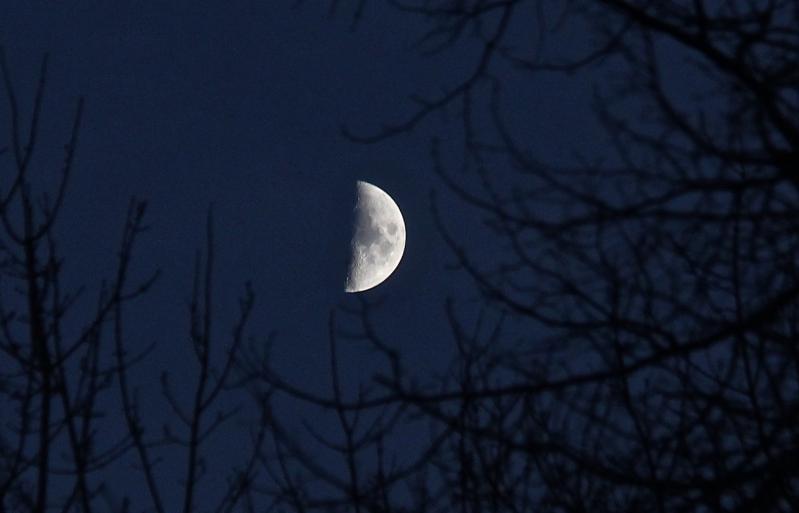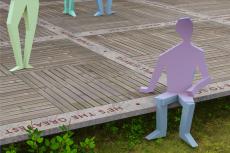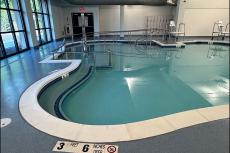It’s been nearly 10 years since East Hampton Town updated its lighting code. In that decade, development has increased, especially since Covid, with more houses and more landscape lighting. Also, during that time, science has continued to document the detrimental effect of “artificial light at night” or ALAN, on humans, animals, and even trees.
A new study by the Cornell Lab of Ornithology, written by Colleen Miller and Aaron Rice, takes it even further, and suggests that such lighting could be affecting our local whales, horseshoe crabs, and other marine life. “With shifts in hormonal cycles, reproduction, and species’ interactions, ALAN clearly poses a risk to much of the marine world,” they wrote. While the paper acknowledges gaps in knowledge and recommends future study, it could indicate that lighting codes might need revision.
The report offers remedies, including designating dark sky areas, shielding lights, using lights with lower kelvin ratings (kelvin measures the color of light, a lower rating equals a warmer tone), and simply turning them off during critical periods for animals, such as bird migration or spawning for marine life.
“There’s no magic number for what an okay amount of light for the environment is,” Ms. Miller said in a phone call last week.
East Hampton Town has 131 miles of coastline, which means lighting here impacts not just birds, insects, and humans, but these creatures of the deep, which we don’t routinely see, especially at night.
Our freshwater bodies are affected as well.
Susan Harder, the New York State Representative of Dark Sky International, said that other studies have linked harmful blue green algae blooms on ponds to artificial light at night as well. “The zooplankton will not come up at night and eat the algae because they assume it’s daytime with all the light falling on the water,” she said by phone. On Sept. 15, the town issued an advisory regarding an algal bloom on Fort Pond in Montauk.
A 2022 United States Department of Energy report, titled “2022 Solid-State Lighting R&D Opportunities” states that 99 percent of outdoor light is wasted, with only 1 percent serving a useful purpose. Skyglow, which describes the orange cast that covers clouds on overcast nights when land lights bounce of them, can now be detected at 22 percent of coastlines globally, according to Ms. Miller’s report.
Ten years ago, Kelvin was hardly part of the discussion in the town, but Ms. Miller’s study says that bluer light penetrates the water column farther than warmer light and has a greater impact on marine life. “It’s really about the amount of blue light,” said Ms. Harder. “Saying something is ‘dark sky friendly’ isn’t the whole story. The story has to include shutoffs, Kelvin, and the shielding.”
“People were very cognizant of impacts to both flora and fauna during those discussions,” said Jeremy Samuelson, the East Hampton Town planning director. “Everything from migratory patterns of birds to premature leaf drop in trees were discussed in relation to light pollution,” he said.
“It’s important to acknowledge that the town code is a living document, and it needs to evolve over time. When we know enough to do better, we will do better,” he said, paraphrasing Maya Angelou. “The process is the outcome, and the process is intended to get us to do better.”
The stated intent of the lighting code is “to control and regulate exterior lighting throughout the town, to promote public safety on the town’s roads and highways, protect landowners from the intrusive effects of glare and light trespass, preserve the rural character of the town, and maintain and restore the beauty of the night sky.”
Kevin Cooper, the director of ordinance enforcement in the town, said in 2022, 52 complaints came in regarding excessive light; in 2023, so far, that number has decreased, to 29. “We’ve only given out one ticket for residential lighting this year,” he said in a phone call. “Mostly people are pretty good. They don’t really know the rules, but I think the numbers are down because of education. We give out pamphlets.”
The code highlights skyglow and its negative impact on birds. In New York City, scientists were able to quantify that over a million migrating birds got tangled in the Tribute in Light display meant to commemorate those lost in the Sept. 11, 2001, attacks. They were able to improve the situation by simply turning the lights off every 20 minutes, which allowed the birds to escape the draw of the beams.
Ms. Miller said marine animals depend on light cues to know when to migrate or to mate. “Solar and lunar cycles regulate key life history events.” The report highlights the classic study about artificial light at night and marine animals involving Florida sea turtles. Females may avoid overlighted beaches to lay their eggs. Even when they overcome that obstacle, their hatchlings die when they get confused and head toward artificial light, instead of the moonlight reflecting off the ocean.
“Light is a key structuring system in marine ecosystems,” says the report. The shallower the water, the easier it is for light to penetrate. Marine organisms have adapted to how the light behaves in their chosen habitat, they gather where the light tells them to. So, what happens when that new beachfront house glows all night? If you doubt how a cluster of floodlights could possibly impact species 100 yards offshore, consider that it’s not just the moon and the sun that influence the behavior of sea creatures, but even starlight, which, according to the report. Is “100 million times dimmer than sunlight.”
“Starlight is still critical for many organisms, used in navigation in fish, reptiles, and birds; moonlight and starlight can easily be washed out by artificial sources of light, causing shifts in marine biological systems,” according to the report. While they’re not swimming and are rarely seen from land, pelagic bird species also get thrown off by this artificial night light. Shearwaters, well known to many local fishermen, scour the tops of the waves, rarely landing, just a few hundred yards offshore. The last couple of years, batches of them have shown up dead along our shores, and it is unclear why.
With autumn, the nights get longer, and outdoor landscape lighting becomes more noticeable, even as our population dwindles. “You don’t need to light up your mailbox in December,” said Ms. Harder. “Lots of lighting is left on, and there’s no one there to see it.”




